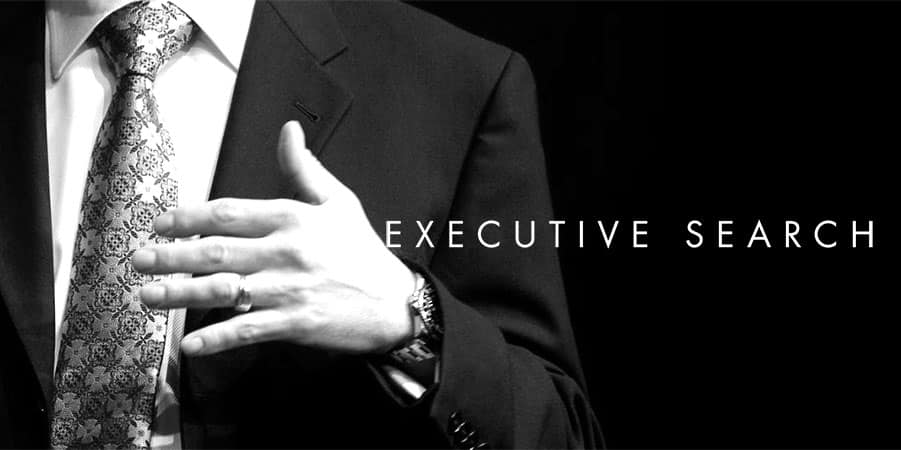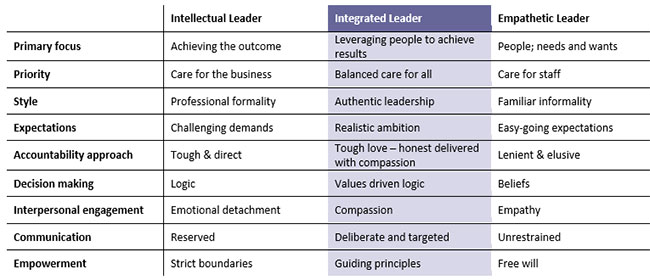Hiring a great CEO: drivers of success and common mistakes to avoid

Among the most important decisions any Board of Directors make is who to appoint to the role of CEO. The decisions the CEO in turn makes about the leaders they entrust to lead their team unquestionably has a profound impact on the performance and ultimately viability of any business. Poor hiring decisions at the most senior levels of an organisation are at the heart of the performance challenges I observe in many businesses I work with.
Getting selection decisions right begins with having a clear view of the role, as well as the capabilities and approach needed to drive results. While the role of CEO may on the surface seem obvious, understanding the unique context of your organisation and what that means for the top job is critical. For example, some organisations are best served by an entrepreneurial leader while others are more effectively led by someone able to mature the organisation or take it to the next level of operational excellence and service delivery.
The Role of CEO
Regardless of the unique requirements of your organisation creating a clear and compelling vision for the future, developing and executing effective strategies, ensuring governance and building both the capability and spirit of the team are at the heart of what every CEO must do. Optimising business performance demands the CEO lead the way and hold others accountable for leveraging the full potential of people and organisational capabilities such as products, services, systems and processes. No matter whether the CEO is leading a large organisation or a small business, these priorities remain the same.
Arguably the most important role of the CEO is to take ownership of results and provide strong leadership. To be effective in their role, it is a non-negotiable requirement that the CEO demonstrates personal commitment and consciously models the way. They must strive to be a clear and visible example of what they need and expect from others. In other words they must lead by example and be a visible champion through both their mindset and behaviour. It is the CEO’s role to inspire and influence the engagement of all key stakeholders including the Board, executive team, managers and staff.
To build a thriving and sustainable business a dynamic and ongoing approach to planning for the future is critical. It is the CEOs role to lead their team to create their vision and regularly challenge it to maintain its relevance. The ability to imagine possibilities and identify both the best direction and strategies to adopt is a core competency of great leaders at the top of any business. The CEO must be capable of guiding their team to identify the steps and capabilities required to succeed. Just as important is their ability to leverage the knowledge of their whole team to identify obstacles and challenges they may encounter along the way.
The CEO is responsible for ensuring their executive team understand and are committed to achieving business objectives. As a leadership team it is critical that they adopt a determined, focused & courageous approach. Every leader, starting with the CEO must consistently mandate and endorse agreed strategies, initiatives and policies aimed at achieving the organisation’s vision. At the end of the day, success is determined by the extent to which the CEO holds themself and others accountable.
For any organisation to have a strong team spirit the CEO must earn trust and respect; the things that matter most are their ability to act with integrity, have compassion, drive accountability and operate with transparency. The CEO must play a lead role in defining and executing strategies to grow, protect and harness the spirit of the whole team. While often supported by specialist experts, it is very much the CEO’s job to coach and lead executives to leverage the full potential of the team.
Key elements of an effective hiring process
The objective of any hiring process is to optimise the quality of the decisions made. There are no guarantees or fail proof strategies however a strategic approach can go a long way to avoiding costly mistakes. Quality outcomes are underpinned by a well-considered and planned approach. A common mistake I have seen Boards make is launching into a recruitment process without first giving enough thought to what they want to achieve or how to go about it.
Before embarking on a search process ensure you understand the required:
- Knowledge and skills: what are the minimum requirements for a candidate to be considered? Consider technical, organisational and interpersonal capabilities.
- Experience: What scenarios or environments must a potential CEO have experienced before and performed well in?
- Values and behaviours: What must they bring in order to drive the organisational culture needed to drive success?
Determine the process you will work through to assess each candidate. Important considerations include:
- Look for demonstrated capabilities reflected in past experience and achievements. Expect candidates to share insight to the impact they are able to have on your business by showcasing what they have done in the past
- Place non-negotiable priority on culture alignment. Never hire a CEO who is unlikely to bring values and behaviours aligned with the culture you want in the business.
- Provide clear insight to the expectations you have of the role. Ensure candidates are able to accurately assess the role as well as their ability to deliver and desire to take on the inherent challenges
- Include a diverse group of people in the selection panel; leverage those able to bring varying perspectives that will support a full and accurate assessment
- Leverage psychometric and skills based assessment tools to provide further insight to each person you choose to seriously consider for the role.
- Listen to your gut reactions to the suitability of candidates. If something doesn’t feel right, it probably isn’t. Keep digging until your concerns are either validated or dismissed.
- Talk to referees directly – assign responsibility to a member of the Board with appropriate capability. While skilled Executive Search consultants can do an effective job, it’s important to remove potential bias driven by desire to place their candidate.
- Leverage the services of capable Executive Search consultants. Select the right people to work with you and listen to their advice.
- Consider the recruitment process complete only once the appointed candidate successfully completes their probationary period. Be prepared to respond swiftly to early indications of the candidate’s capabilities or approach being different to what you expected.
Common Mistakes to avoid
Maintaining a balanced focus on technical skills or industry knowledge with the ability to drive business performance through people is of paramount importance. All too often CEOs bring deep knowledge and insight of the business or industry but fail to engage their workforce effectively to turn vision into reality. Avoid the all too common mistake of being enticed by technical capabilities in the absence of cultural alignment.
Much like what I observe at more junior levels of an organisation, a common driver of poor executive performance is appointing inexperienced people and failing to provide the support they need grow into the role. While it can be a viable option to appoint someone early in their senior leadership career, unless deliberate steps are taken to grow their capabilities their chances of success are hit and miss at best.
It’s common for me to observe leaders operating at one end or the other of a spectrum of leadership approaches. At one end is the leader focused on driving results and at the other are those whose greatest concern is for the needs and wants of their team. The ‘results guy’ or intellectual leader as I often call them fails to effectively inspire and engage their team. Equally the ‘nice guy’ or empathetic leader fails to take action and deal with the tough stuff needed to optimise performance.
Great leaders integrate these polar extremes and bring a balanced focus on both getting the job done and engaging the people who make it possible. In other words, the Integrated Leader places equal priority on the need to achieve outcomes and to engage people effectively in the process. Balanced in their thinking, they are typically commercially astute and understand the link between people performance and business results.
It is common for Boards to hire CEOs who fail to bring this integrated approach. Significant value is often placed on driving results without adequate focus on how the candidate is likely to go about that. While commitment to driving performance outcomes is essential, so to is the CEO’s ability to achieve that through the talent and energy of their team. The table below illustrates where the integrated approach to effective leadership lies. Unfortunately there exists no magic wand guaranteeing the success of any executive appointment. What is critical is a well-developed understanding of the role, a planned and thorough attraction and assessment process and focused onboarding activity. And remember that little bit of luck along the way always helps.
Intellectual, Integrated, And Empathetic Leader
Unfortunately there exists no magic wand guaranteeing the success of any executive appointment. What is critical is a well-developed understanding of the role, a planned and thorough attraction and assessment process and focused onboarding activity. And remember that little bit of luck along the way always helps.
Have you read?
India’s Richest Tech Titans: 8 Wealthiest Indian Tech Billionaires, 2016
7 Ways to Improve the Employee Relocation Experience
Revealed: the recipe for career satisfaction
50 best U.S. business schools for full-time MBA programs of 2016, according to Bloomberg
Written by Karen Gately, the author of The People Manager’s Toolkit: A Practical guide to getting the best from people. A highly regarded leadership and people-management specialist, Karen is the founder of Ryan Gately, an HR consulting and Leadership development practice.
Bring the best of the CEOWORLD magazine's global journalism to audiences in the United States and around the world. - Add CEOWORLD magazine to your Google News feed.
Follow CEOWORLD magazine headlines on: Google News, LinkedIn, Twitter, and Facebook.
Copyright 2025 The CEOWORLD magazine. All rights reserved. This material (and any extract from it) must not be copied, redistributed or placed on any website, without CEOWORLD magazine' prior written consent. For media queries, please contact: info@ceoworld.biz









